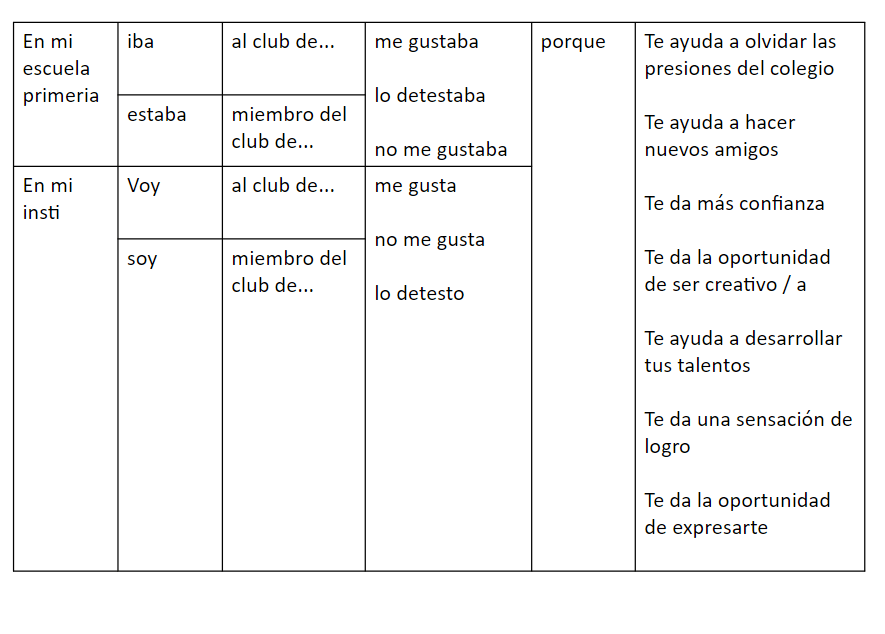How to Effectively Incorporate your Target Language into your Teaching

Modelling the language we want our students to use is important, says Kate Carter – but so is finding a good balance…

- by Kate Carter

Back in my NQT year, the head of humanities came to watch one of my lessons. Afterwards, we had a discussion about how it had gone.
Having the training I did, and being new and eager to please, I spoke at length about Target Language (TL) and how I knew I needed to use more. The head of humanities had no idea what I was talking about – and when I explained, he didn’t understand why I was so bothered by it.
Now, as any language teacher will tell you, how we use TL is anything but straightforward; and the ‘when to use it’ dilemma can create a lot of stress and anxiety.
I think one thing we can all agree on is that the use of TL is important. When I first started teaching in 2005, the research available from various studies was in favour of as much TL use as possible.
This was reinforced in our teacher training and often led to a lot of criticism of teachers who used a mixture of both (English and TL), or who weren’t seen to be using enough.
Nowadays, there seems to be a lot of controversy surrounding the amount of TL we should use.
Although there continues to be a range of studies which continue to advise 90-100% use of TL in the classroom, there are other studies which argue a successful approach is a mixture of both TL and English.
Why it matters
So, what’s the ideal? First of all let’s look at why we use TL in our lessons.
The primary aim is to support our students in their own acquisition of the language.
We know that using TL consistently, contributes significantly to this process. It allows our learners to see the language in action, and through its use we can naturally model the syntax and pronunciation we want them to produce.
In addition, it improves students’ listening skills as well as vocabulary knowledge.
However, there are challenges.
Using TL constantly can mean that it is very difficult to build those necessary relationships with students and therefore, it sometimes means that our behaviour management can suffer as a result.
We can also (and I have been guilty of this many times over) concentrate so much on trying to use as much TL as possible that we end up losing the students’ interest.
It is also important to remember that the process of acquisition is different in our classrooms from how it is for students who are actually living in the relevant country.
The latter would involve being immersed in the language 24/7 – a completely different experience from what learners have in our classrooms, where we (the teachers) are normally the only source of ‘expertise’ and we have a limited time to share it.
The right approach
If we want our students to be able to talk in TL themselves then we have to think very carefully about the kinds of language we are using and the importance of the role of listening, reading and writing in improving the skill of speaking.
The idea of simply talking with little regard to how this will complement the other skills would clearly be to the detriment of our learners’ progress.
It could be argued that the main aim in any language classroom should be to encourage our students to use TL themselves and our role as a teacher is how we can best facilitate this.
Therefore, although TL in the classroom is essential, the teacher’s use of it has to be purposeful.
Here are some ways to make it work for you and your students:
1 | Focus on routines
Use TL for routines with structures that they will need to know and use themselves; asking what the day is, weather etc.
2 | Keep it relevant
Avoid using TL mindlessly in the hope that your students will somehow absorb the language. Instead, think about the vocabulary and structures you want to cover during the lesson and deliberately include these in your talking.
A good approach is to introduce a ‘small talk’ at the start of each lesson. This is a 30-seconds or 1-minute ‘mini lecture’, where you speak in TL on a given topic, using structures and vocabulary which will either be covered later in the lesson or have been covered recently.
I have done this where I have given students the structures we will be using that lesson as a handout and they have to highlight the ones they hear; or they could simply write down relevant structures, phrases or words.
This complements listening, as well as modelling the language you would like the students to use themselves.
3 | Model and scaffold
Use TL to model the structures you would like the students to use. Start off with basic examples (revisit something they would have seen and heard before), and then add more-challenging ones.
4 | Get them talking
Encourage your students to use more TL with each other. There are so many ways to do this and they do not have to be complicated. You can start off with simple structures which have been modelled, and include prompts and visual clues on the board.
5 | Think about instructions
Use your professional judgement when it comes to using TL for instructions. If you think the amount of time it will take you to explain the task in TL will take focus away from the task itself then I would argue that using English is okay.
6 | Build it up
Increase the level of TL you use gradually, over time. In this way, you can build those all important relationships with students at the same time, rather than overwhelming a new group who don’t know you or what to expect from you.
The important thing to remember, is that using TL is much more than simply talking. It is about modelling and revisiting vocabulary and structures, with the end game of instilling confidence in your students to use the language themselves.
Kate Carter is a languages teacher as well as an ITT and NQT mentor. You can find her at katecarter.co.uk and supporting new teachers in her Facebook group ‘NQT Support’. Browse our resources for European Day Of Languages.







